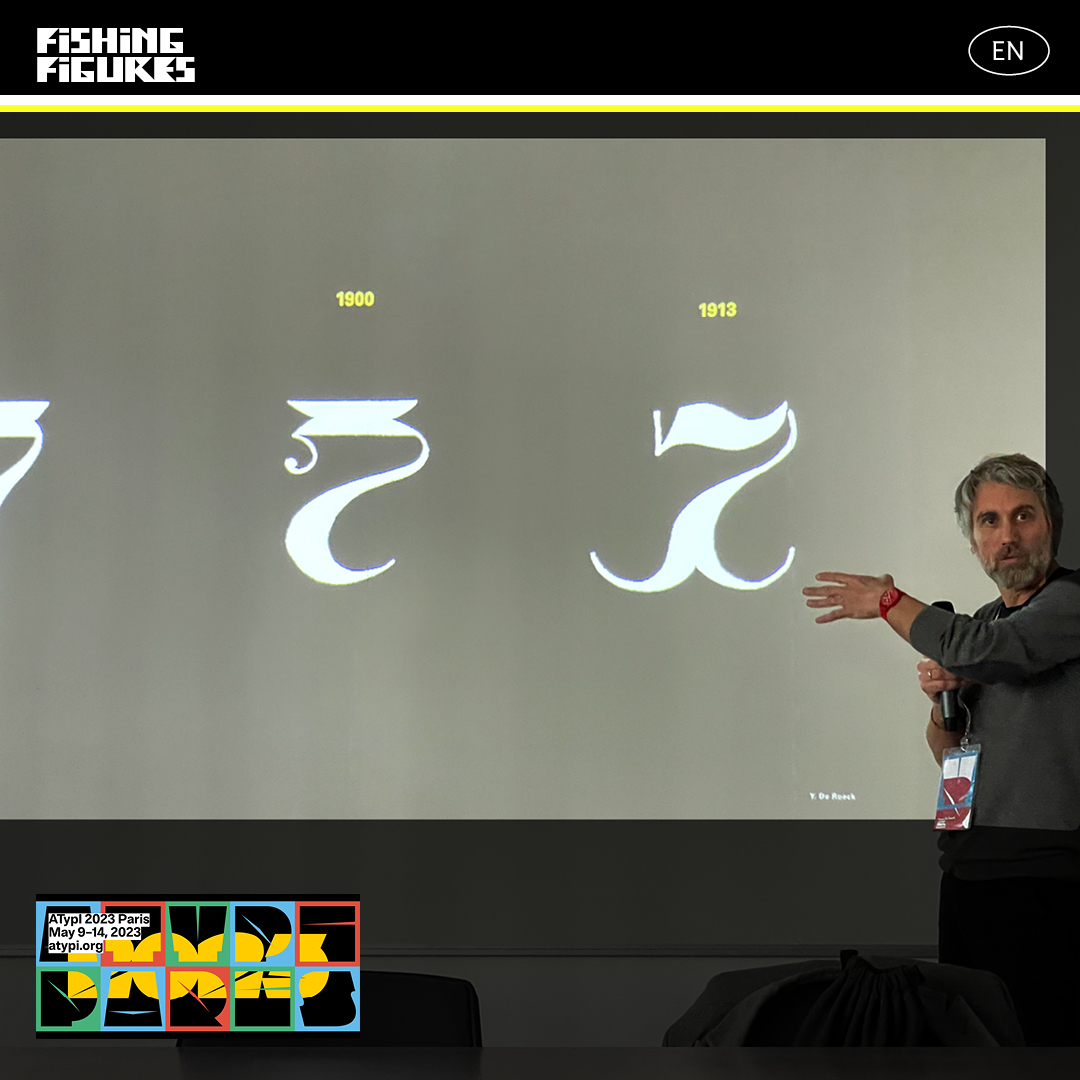Fishing Figures
Lecture given on May 12, 2023 at AtypI Paris
Sorbonne Université Campus Pierre-et-Marie-Curie.
In the mid-nineteenth century, the French Ministry of the Navy ordered all fishermen to register their boats with local authorities. Drifter boats and sardine luggers were henceforth required to sport a clearly visible number and initial letter on their bows and sails, in order to help the gendarmes identify them. Whether or not a standard form of lettering was recommended by the authorities, boat numbers followed a consistent style (albeit hand-crafted) until the early 1880s. Then forms began to shift. Blackletter initials occasionally popped up on boat hulls, as did ornamental squares or diamonds; rounded letters opened up to the point of illegibility, ending in ball terminals or even more spectacular bifurcations (or ‘barbs’) at the feet of vertical stems. According to some old fishermen, the ‘barbed’ alphabet style was invented to make the figures ‘favourable for fishing’ and to bring good fortune. But other witnesses rejected this superstitious idea and suggested purely aesthetic motives. Far from being incompatible, these points of view shed light on the complex ways of thinking at the time and our diverse perceptions of the people involved. So were these graphic forms about identity, or art, or lucky fishing?
Visual identity of the event by Bureau Brut






